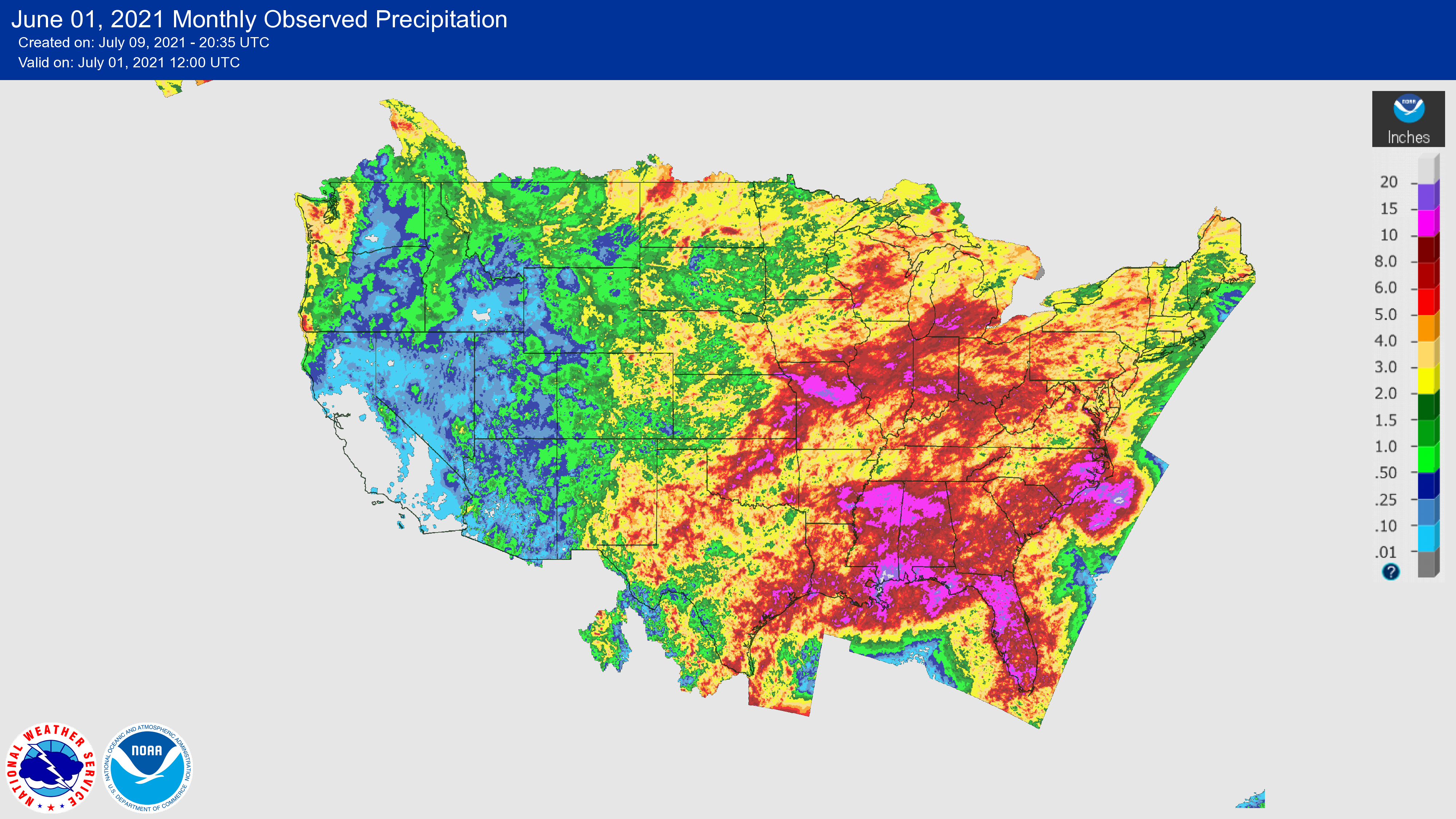Heavy Rains Rob Corn of Yield-Boosting Nutrients
7-1 Corn Nitrogen - Farm Journal
The adage “rain makes grain” may be true but too much rain could strip soils of applied nutrients at a key time in the growing season.
“We’ve seen some big rain events, anywhere from six to 12 inches of rain over the last 13 days or so,” said Missy Bauer of B&M Crop Consulting.
Looking at June precipitation totals from the National Oceanic and Atmospheric Administration (NOAA) shows widespread parts of the Midwest and South received anywhere from 6 to 20 inches of rain.

“I can assure you heading forward that there are going to be some areas running right through the heart of the Midwest that are going to be a little bit too wet by the time we get to the Fourth of July, meaning that we'll be experiencing lowland flooding and some loss of nitrogen just by leaching,” says Brad Rippey, USDA Meteorologist.
“When you get that much rain in that short period of time and if your heavier souls are staying saturated, we can lose a lot of nitrogen within just a few days,” said Missy.
Missy and Bill Bauer putting together a video (above) explaining the losses and how heavy rain events impact corn production.
“In 3 to 5 days, we can lose 60% to 80% of our nitrogen because the soil is saturated and we've taken all of the oxygen out of the soil along with these warm conditions,” said Bill Bauer.
The timing of these recent heavy rains is what’s driving crop concerns. Missy says an early June rain, even up to ten days long, may only mean a 25% nitrogen loss versus the 60% to 80% loss risk later in the month.
“We're looking at probably 2015 since we've had some big denitrification events to deal with,” said Missy. “Big rains at the end of June are very detrimental to the corn crop when it comes to nitrogen.
These Michigan-based agronomists recommend walking fields now and pulling soil samples for a nitrate test.
“When you pull a nitrate test, we want to pull them one foot deep,” said Missy.
If nitrogen has been broadcast, then pull the cores at random, but do avoid the 2x2 starter band. If the field has been side dressed then pull 5 samples uniformly across the row, starting in one and moving across, at equally spaced increments to the next row. The Bauer’s recommend pulling samples in the morning and ship the cores to the lab the same day.
“Don't pull them and let them sit around in the truck for two days or do it on a Friday and have them sit in a shipping terminal somewhere,” said Bill. “We want to take them in the beginning of the week and get them to the lab as soon as possible.”
He says to make sure the lab knows your samples are 12” inches deep because that’s how they’ll calculate the parts per million of nitrate or ammonia. Numbers in the range of 10 to 13 parts per million are not high enough to get corn to the finish line.
“We have 8 to 10 parts per million just to sustain the life in the soil and the microbes,” said Bill. “We've got to make sure we're at 25 to 30+ parts per million depending on your yield goals and what you've applied up to this point to make sure you have enough to finish this crop off.”
In many cases, be it via irrigation, airplane or high clearance spreader, more nutrients can be applied if necessary.
“We can't walk away from this crop,” said Missy. “We've got great potential this year, but we've had a huge event for potential nitrogen loss and we need to make some decisions.”
(For more information contact B&M Crop Consulting)







